Perennial Power: How the Miller Lab is Using Plant Science to Build a More Sustainable Future
The Danforth Center’s Field Research Site in St. Charles, Missouri, is wrapping up its second summer of field experiments. This year, Danforth Center scientists conducted 18 different experiments at the 140-acre farm. Among them are three ongoing studies led by Allison Miller, PhD, and members of her lab team, examining the potential of perennials in agriculture.
The Promise of Perennials
Interest in perennials has grown in recent years. Most major crops, like corn and soybeans, are short-lived annual species that are planted in the spring, harvested in the fall, and then die at the end of the season. These crops are highly productive but have contributed to ongoing losses in topsoil due in part to short-lived root systems and agricultural practices that often leave the soil bare and vulnerable to erosion during the winter months.
In contrast, perennial crops live multiple years without the need to replant each year. They produce edible seeds and make large, persistent root systems that penetrate deep into the soil, where they absorb water and nutrients, hold soil in place and help regenerate it, increase soil biodiversity, and sequester carbon.
Thousands of perennial plant species exist in nature. Although some perennials have been developed into crops, like fruit trees and grapevines, few perennials have been used in grain agriculture until very recently. In this blog, you’ll find three experiments the Miller Lab is conducting to explore how perennial grains could revolutionize the future of food.
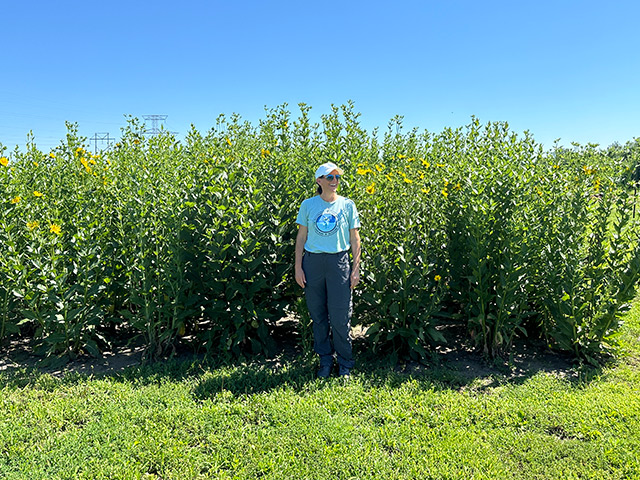
Allison Miller, PhD, stands in front of a plot of perennials on the Danforth Center Field Research Site in St. Charles, Missouri, which provides 140 acres for scientists to run experiments in the field.
Farming for the Future: Developing Perennial Grain Crops
One project is helping to expedite the development of new perennial grain crops through an approach known as phenomic prediction. The idea is that observations made when perennial plants are young (seeds and seedlings) can be used to predict features those plants will express as adults. Because perennial plants live for multiple years, it can take a long time for breeders and famers to assess the attributes of plants. The phenomic prediction approach that the Miller Lab and their collaborators are developing in perennial crops offers a way to gain important information without waiting for the plant to fully mature. Breeders and growers can use this information to select which individuals to advance in breeding programs.
This project focuses on three emerging perennial grain crops: Intermediate wheatgrass (tradename kernza®, Thinopyrum intermedium); a bean relative called sainfoin (Onobrychis viciifolia); and a sunflower relative called silflower that produces oil-rich seeds (Silphium integrifolium). The project is funded by the Foundation for Food and Agriculture Research (FFAR) and is led by Senior Research Scientist Matthew Rubin, PhD, together with collaborators at The Land Institute (Salina, KS).
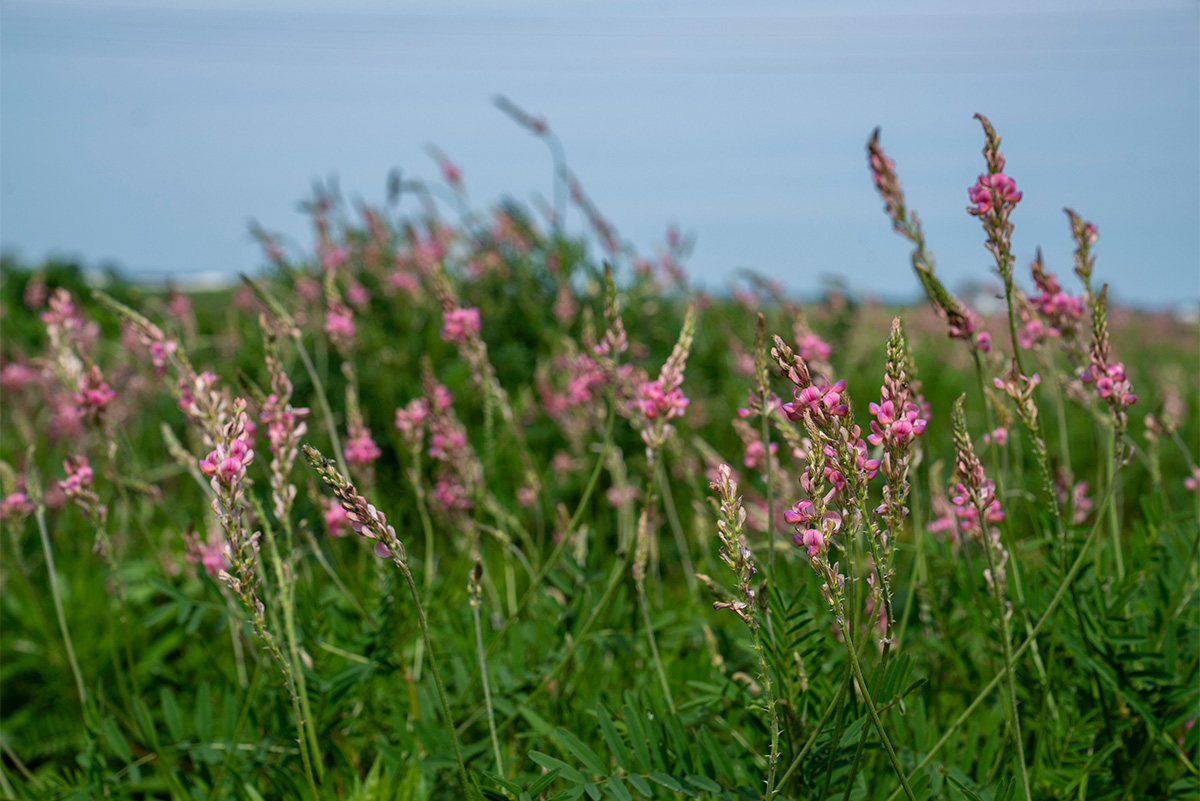
Onobrychis viciifolia, a bean relative commonly known as sainfoin or bakibean, blooms on one of the Miller Lab’s research plots.
Thousands of individual plants were screened as seeds and seedlings at the Danforth Center and then planted out at the farm where the team tested whether observations made as seedlings can predict traits observed in the field. The experiment was also replicated in Kansas to determine if predictions hold up across different environments.
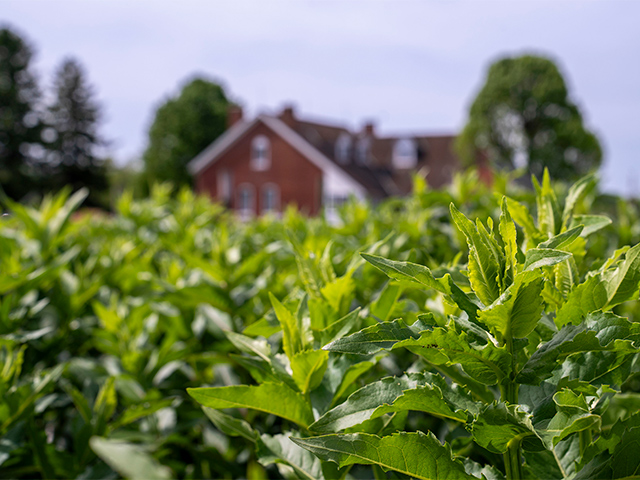
Silphium integrifolium, or silflower, is a sunflower relative that produces oil-rich seeds.
From Soil to Surface: How Plant Root Systems Affect Growth Habits
The second project is interested in understanding how a plants’ appearance and behavior above ground relates to what is going on below-ground. For example: Do perennial plants that make more flowers, fruits, and seeds have larger roots or smaller roots? Do taller plants have deeper roots? Does this change from one year to the next year?
This project involves the oilseed silflower (Silphium integrifolium) and a perennial bean relative and potential cover crop, kura clover (Trifoium ambiguum).
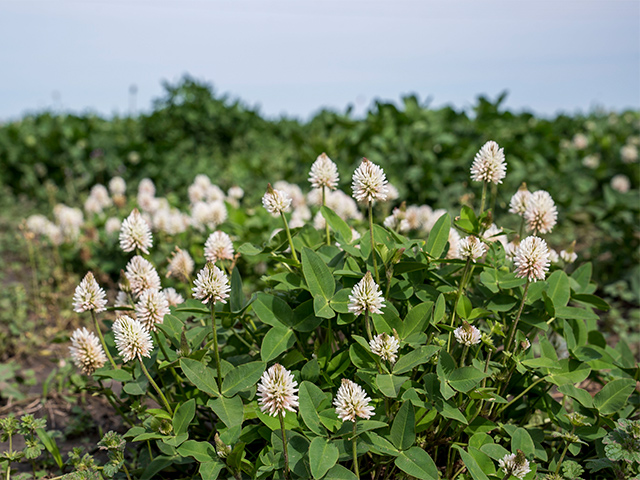
Trifoium ambiguum, or kura clover, blooms in one of the Miller Lab’s research plots.
Part of these two studies involve newly installed minirhizotron tubes, clear tubes inserted about five feet into the soil. Working closely with Senior Research Scientist Molly Hanlon PhD, and the Danforth Center Phenotyping Core Facility, the Miller Lab sends a camera into the tube to visualize plant roots in soil. This project is a collaboration between the Miller, Baxter, and Topp labs and is led by Postdoctoral Associate Stella Woeltjen, PhD, and Research Associate Shayla Gunn. The work is part of the New Roots for Restoration Biology Integration Institute, a $12.5 million dollar initiative funded by the National Science Foundation led by Allison Miller.
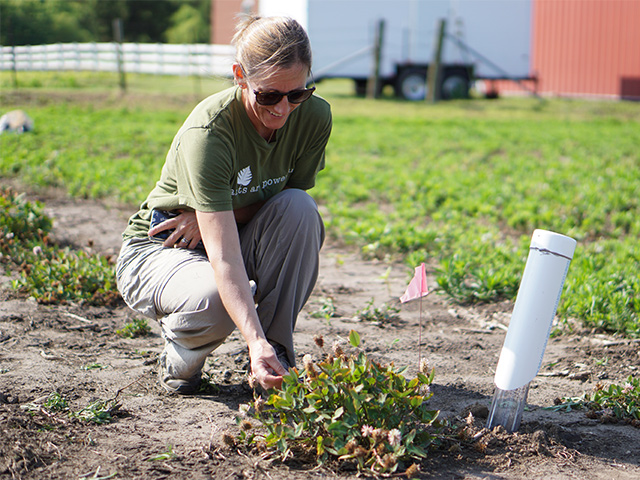
Allison Miller, PhD, assists with minirhizotron installation at the Field Research Site.
The Value of Variety: Exploring Diversity among Perennials
The third project focuses on the benefits of introducing diversity into perennial agriculture. Although most agriculture fields consist of one species grown in monoculture, research suggests that agricultural systems that include more than one perennial plant species grown together (a polyculture) require less nitrogen fertilizer and have more positive impacts on soil fertility.
This experiment focuses on the perennial grain intermediate wheatgrass (tradename kernza®, Thinopyrum intermedium) and has four treatments: intermediate wheatgrass growing by itself without fertilizer, intermediate wheatgrass growing by itself with fertilizer, intermediate wheatgrass growing alongside alfalfa, and alfalfa growing by itself.
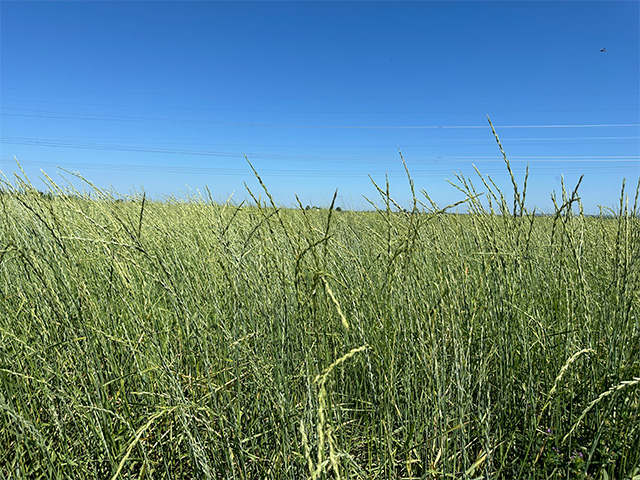
Perennial grain Thinopyrum intermedium, also known as kernza®, grows at the Field Research Site, where the Miller Lab is currently using it to study the benefits of biodiversity among perennials.
This set of four treatments is replicated four times at the Field Research Site, and the entire experiment is also planted at another location in
St. Louis, as well as in five other locations from Kansas to Vermont. Both above- and below-ground observations of the plants, as well as soil metrics, are being collected to determine how the features or traits of intermediate wheatgrass differ between plants grown alone in monoculture versus those grown in polyculture; how monoculture and polyculture influence the soil and soil microbiome; and finally, how different soil types across the different locations influence these patterns. This work is also funded by the National Science Foundation through the New Roots for Restoration Biology Integration Institute and is led locally by Senior Research Scientist Molly Hanlon and Saint Louis University PhD Candidate Kenneth Okonkwo.
These experiments point to strong evidence that perennial crops grown together in mixtures have positive impacts on the soil. “There is widespread interest in not only developing new perennial grain crops, but also in diversifying agriculture by growing different perennials in the same field.” Allison says. “We hope our work will increase the number and quality of perennial grain crops used in contemporary agriculture and ultimately result in positive impacts on the soil and for the planet.”
In addition to the scientists mentioned above, the perennial projects described in this blog are carried out by a great team of technicians and students who help maintain experimental plots and collect samples in the field. In summer 2024, this team included technicians Jack Braley and Isabella Vergara, research assistants Sravani Valligari and Tuany Volz, SLU graduate students Biva Chapagain, Deva Raj Khanal, Danielle Hopkins, Kenneth Okonkwo, Tyler Thrash, and Nia Worth, and undergraduate research assistants Liam Keaggy (Washington University St. Louis), Max Look (Saint Louis University), Olivia Paul (Missouri S&T), Allie Schenewerk (Saint Louis University), Karen Schmiedeler (Saint Louis University), and Alyssa Smith (Saint Louis University), and recent high school graduate Margaret Houston.